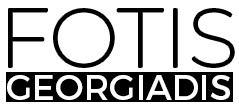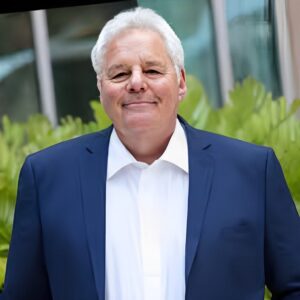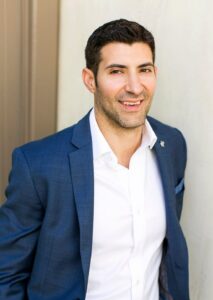An Interview With Fotis Georgiadis
… Experienced workers are also great mentors. And many employers are starting to see the value of a two-way street, with younger and older workers mentoring each other.
As a part of our series about “How Diversity Can Increase a Company’s Bottom Line”, I had the pleasure of interviewing Martha Boudreau.
Martha Boudreau is Executive Vice President and Chief Communications and Marketing Officer (CCMO) at AARP, the nation’s largest social mission organization that advocates for Americans 50+. As a member of the Executive Team, Martha provides strategic direction for brand positioning, membership growth, content strategy and driving high value consumer experiences. In addition, she is responsible for overseeing AARP’s award-winning publications, AARP The Magazine (ranked as the highest readership of any magazine in the U.S.) and the AARP Bulletin.
Thank you so much for doing this with us! Before we dive into the main part of our interview, our readers would love to “get to know you” a bit more. Can you share a bit of your “backstory” with us?
I’m originally from Detroit — a University of Michigan alum — but I’ve spent my career in Washington, D.C. Before joining AARP in 2014, I spent 27 years at the global public relations firm, FleishmanHillard, where I was President of the Mid-Atlantic & Latin America regions.
I live in Annapolis, MD, am a dog lover and an avid sailor of traditional boats.
Can you share the funniest or most interesting story that happened to you since you started your career? Can you tell us the lesson or take away you took out of that story?
It’s difficult to pick out one funny moment but I can say that having a sense of humor is essential in all of life, including in the professional world. I look at humor in two ways. First, using humor to lighten the mood in a difficult conversation or situation can make the difference between resolving a problem and letting it fester. And finding humor, especially in embarrassing situations, injects humility into situations that often involve hierarchy and therefore a level of awkwardness if something goes wrong. That said, humor doesn’t translate well in e-mail and social media, so you have to be careful with those interactions.
Can you please give us your favorite “Life Lesson Quote”? Can you tell us a story about how that was relevant in your own life?
“Everything of significance a leader accomplishes happens not just because of his or her efforts, but through the efforts of others.” — Mark Sanborn
What I love about this quote is that it’s about the power of teams and respecting the role of every colleague regardless of where they sit in the hierarchy.
I learned early in my career that no one person or group has all the skills necessary for organizational success. My business unit at AARP is a perfect case in point. We have a wide variety of disciplines and capabilities that align with our many communications and marketing channels and it’s essential that we respect and play to everyone’s strengths and experience. Team building is never done — especially as you bring new people on. It’s always a work in progress. I have learned that the best way to successfully manage a large team with disparate capabilities is to create a culture and structure that drives collaboration and innovation, then hold people accountable for operating within that system.
None of us are able to achieve success without some help along the way. Is there a particular person who you are grateful towards who helped get you to where you are?
I was fortunate that early in my career I was able to work closely with John D. Graham, Chairman of FleishmanHillard. At the time, he was CEO and he taught me how critical a strong corporate culture is to the success of a high-performing organization. When people see that their success is tied to the organization’s success, you’re in the best position to achieve your goals. John instilled in me a belief in the power of teams and that there is no limit to what a good team is capable of accomplishing. He showed me the importance of giving staff, at all levels, the confidence, ability and space to grow and flourish. John also demonstrated the power of a clear, inspirational vision. This is a quote of John’s that resonates with me even today: “You can have all the vision and commitment in the world, but you will not get far without good people. Choose your team carefully. Share your vision with them. Work with them, develop them and they will bring your vision to life.” John’s leadership lessons continue to guide my personal style.
What do you think makes your company stand out? Can you share a story?
Quite simply, AARP’s mission is directly relevant to every person in our country, regardless of age. Consider this: Experts believe half of today’s 5-year-olds will live to be 100. The fastest growing demographic in the country is the 85+ segment and the second-fastest is the 100+. This significant increase in life expectancy means that our work to disrupt the way people view aging is more important than ever.
At this moment, more than 110 million Americans are age 50 and older. Our goal is to help all of them realize their full potential at every age and life stage. By listening to the concerns of our members, understanding their needs and what they’re interested in, we’re providing information and resources they need to make informed decisions and live their best life. We are also fierce advocates on policy, legal and regulatory issues.
It is this blend of education and advocacy for the burgeoning aging population that makes our mission both urgent and relevant to all Americans.
Are you working on any new or exciting projects now? How do you think that might help people?
I am excited about the progress we are making against our Consumer Commitment which is to serve two roles for consumers — one as a Wise Friend and the other as a Fierce Defender. We honor these roles in consumer’s lives by providing them with information that is timely, relevant, easily accessible and useful to them every day.
We feel an enormous responsibility to provide high quality resources and to make them available everywhere — from people’s mailboxes to their laptops, mobile phones and tablets. Although our cross-channel technology work and content creation doesn’t sound too glamorous, it is the backbone of our brand’s trust and relevance.
How have you used your success to bring goodness to the world?
When the pandemic hit and we were suddenly disconnected and isolated from family and friends, my team created AARP’s Virtual Community Center. This platform was designed to provide free digital events and online classes for learning, self-improvement, and fun, and encourage a sense of community and connection. It’s an idea that came to life quickly and had an immediate impact as people were brought together in a new and unique way.
We also used our digital capabilities to create Community Connections, a site that allows people to find or start a mutual aid group so they can help people in their community most affected by COVID-19.
Ok. Thank you for that. Let’s now jump to the main part of our interview. This may be obvious to you, but it is not intuitive to many people. Can you articulate to our readers five ways that increased diversity can help a company’s bottom line.
Creating a diverse workplace requires a culture of inclusion, processes that create equity in compensation and career growth at all levels, as well as a commitment to attracting and retaining staff who represent all elements of diversity — age, ethnicity, race, religion, gender identity, sexual orientation and ability. There are additional types of diversity that include socio-economic, education, appearance and religion. At its core, a diverse workplace must reflect the reality of our society.
As the Chief Communications and Marketing Officer I sit at the intersection between DEI and Marketing and I focus on making sure our marketing strategies resonate across diverse populations. For our work to be authentic and truly connect with people, we need staff with a wide range of life experiences. It’s these life experiences that infuse our understanding of how we can talk to and help the 110 million Americans over the age of 50.
In the world of marketing, there are many tools to measure the impact that culturally appropriate ads have on product sales. In every case, the results of tests across 60+ industries show that advertisements and other marketing materials that accurately capture imagery, language and context for multi-cultural audiences perform better. In fact, they result in higher “intent to buy” scores across product categories. It boils down to a simple truth: People want to be seen for who they are. Companies that get it right benefit from sales, talent recruitment and customer loyalty.
In this time of intense competition for talent, attracting a diverse pool of candidates has never been more difficult. But remarkably, older workers are often overlooked by recruiters despite their growing need for talented staff. With over 10 million jobs available in the U.S., the good news is that there has never been a bigger opportunity for employers to turn to older workers to fill the needs of the workplace.
Here’s why an age-inclusive workforce makes so much sense:
- Older workers aren’t starting from scratch. Rather, they bring an array of skills to the job, including soft skills, such as the ability to negotiate, persuade, communicate, plan, strategize and empathize with the customer’s needs and concerns — skills that are only acquired with experience.
- Experienced workers are also great mentors. And many employers are starting to see the value of a two-way street, with younger and older workers mentoring each other.
- Older workers are loyal and tend to stay on the job longer than their younger cohorts. Retention is an important metric for any executive to keep an eye on.
- Studies show that age-inclusive teams are more creative in their problem-solving. Because they bring a wide variety of perspectives, facts and ideas to the table, they tend to reach more accurate conclusions about the data before them.
- And, research has shown that productivity rises in firms with a higher share of workers age 50+ relative to the average firm. In other words, if two firms have the same headcount but one has adopted an age-inclusive strategy, it will produce more than the one who didn’t have a strategy in place. That’s huge.
What advice would you give to other business leaders to help their employees to thrive?
My perspective on driving high performing organizations falls into four areas. I believe employees thrive based on these overarching building blocks:
- It is essential to create and manage to an organizational culture based on clear values and mission. At AARP our mission is consistently cited as a major driver of talent acquisition and retention.
- Clear, consistent employee communication is also a foundational element of thriving employees. If people aren’t getting answers and direction from senior leadership, they get frustrated and waste energy trying to fill in the gaps themselves.
- Develop your managers — they are closest to the staff, process and outputs. They know what’s really going on and they are powerful voices in support of executive vision. Build a culture of trust that does not include micromanagement.
- Provide a benefits package that is relevant for all lifestyles and life stages. For example, there are 48 million family caregivers in the country, so companies that recognize the demands of caregivers are likely to garner increased loyalty. AARP’s caregiving benefit is routinely called out by employees as being especially appreciated. Employees at all levels thrive when they have ample resources including adequate staffing, technology and learning opportunities. And of course, there are the basics: competitive compensation, healthcare and a retirement savings plan.
What advice would you give to other business leaders about how to manage a large team?
Set a vision that is powered by the contributions of your entire team. Next, surround yourself with people who are smarter than you and are experts in their discipline. Third, create a culture of psychological safety where your staff can share their ideas and perspectives but — here’s the key — you must actively listen to their input and feedback. Fourth, demand a culture of collaboration and integration of workstreams. And finally, hold people accountable for delivering.
We are very blessed that some of the biggest names in Business, VC funding, Sports, and Entertainment read this column. Is there a person in the world, or in the US whom you would love to have a private breakfast or lunch with, and why? He or she might just see this 🙂
Former Secretary of State, Madeleine Albright. I have admired Secretary Albright for many years, and it inspires me that at 84 she remains an active voice in global issues, politics, policy, the financial world and academia. Her bipartisan friendships are admirable — now more than ever. Her life experiences give her wisdom and a long view on the issues that are gripping our country today. Plus, I love her style!
How can our readers further follow your work online?
I post regularly on Twitter and LinkedIn.
Twitter: https://twitter.com/MarthaBoudreau
LinkedIn: https://www.linkedin.com/in/martha-boudreau/
Thank you for these excellent insights. We wish you continued success in your great work.
AARP’s Martha Boudreau On How Diversity Can Increase a Company’s Bottom Line was originally published in Authority Magazine on Medium, where people are continuing the conversation by highlighting and responding to this story.



